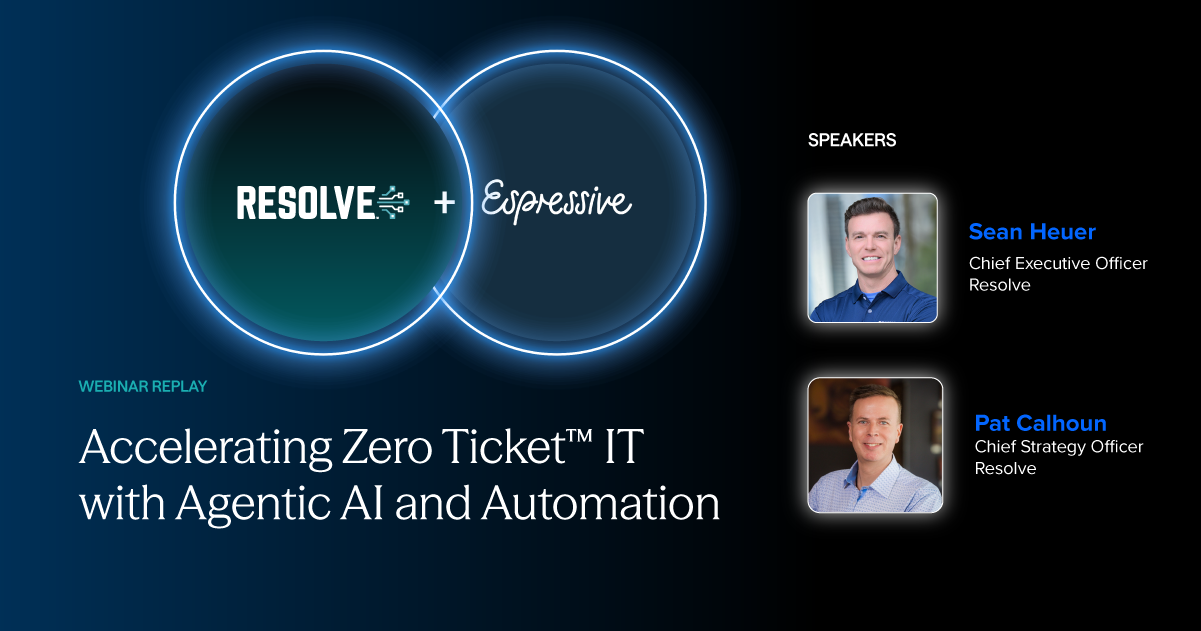
Building a Persuasive Business Case for Automation: A Comprehensive Guide
Subscribe to receive the latest content and invites to your inbox.
Integrating automation technology has become a crucial strategy for organizations aiming to enhance efficiency, reduce costs, and stay competitive. However, convincing stakeholders and key decision makers to invest in IT automation initiatives requires more than just highlighting its potential benefits.
To build a truly compelling business case for IT automation, you must meticulously outline its value proposition and, more importantly, align that with the company's strategic goals and objectives. Below is a detailed guide on how to achieve just that.
Perform a Comprehensive Scenario Analysis
Before diving into the specifics of automation, it's imperative to conduct a comprehensive scenario analysis. This involves examining the current state of your IT operations, identifying critical pain points, and projecting the desired future state post-automation implementation. By clearly delineating the existing challenges and the anticipated improvements, you can effectively contextualize the genuine need for automation within and across your organization.
Identify and Connect Each Benefit “Cause" to its Corresponding "Effect"
One of the cornerstones of a persuasive business case for automation is the ability to articulate its benefits in concrete, quantifiable terms. Instead of presenting abstract notions of efficiency gains or cost savings, break down each benefit into specific "cause" and "effect" relationships.
For example, if automation leads to faster processing times, outline how this directly translates into increased productivity and reduced labor costs. By setting up clear linkages between the proposed automation solutions and their material outcomes, you can provide stakeholders with a more tangible understanding of their potential impact.
As an example, we'll use a basic formula to assign a monetary value to the freed-up time of your IT personnel:

Let's say you spend 4.5 hours weekly on server maintenance. This equates to 18 hours a month, at an average cost of $75 per hour, for $1,350 per month. On a yearly basis, this amounts to $16,200. That's essentially how much you would be saving each year by automating that one single task.
This formula can then be applied to each task you plan to automate so you can add up the annual savings per task to get a tangible ROI that you can present to your stakeholders. If you want to be more conservative, reduce the calculated savings by 10%.
Establish Key Performance Indicators (KPIs) for Each Forecasted Benefit
KPIs serve as essential metrics for measuring the success of automation initiatives. For each forecasted benefit, identify corresponding KPIs that will be used to track progress and evaluate performance.
Whether it's reducing error rates, improving cycle times, or enhancing customer satisfaction, quantifiable metrics provide stakeholders with empirical evidence of the value generated by automation investments. Moreover, establishing KPIs upfront shows a commitment to accountability and transparency throughout the implementation process.
Assess the Economic Risks Associated with Not Investing
In addition to highlighting the potential gains from automation, it's equally important to underscore the risks associated with maintaining the status quo. In other words, just as you want to have solid numbers to demonstrate the monetary value of investing in automation, you'll also want to be able to clearly show the real costs associated with doing nothing.
One powerful way to convey these risks is to calculate the cost of system downtime. Manual incident management leaves the door wide open for costly human error and unchecked vulnerabilities. Without the help of automation, the risk of service or system outage is exponentially higher.
To turn this risk into actual, quantifiable numbers, use the following formula calculate the yearly costs of an outage before automaton:

You can take it a few steps further by including factors such as escalating labor costs, heightened operational inefficiencies, or missed opportunities for innovation. By juxtaposing the projected benefits of automation against the potential costs of inaction, you can underscore the urgency and necessity of making strategic investments in automation technologies.
Align with the Organization's Strategic Goals
Ultimately, the success of any automation initiative hinges on its alignment with the organization's broader strategic objectives. This is especially crucial when presenting your business case to key executives whose primary job is to ensure optimal business outcomes on a much grander scale. For these stakeholders, the granular benefits of automation aren't as relevant as how the investment into these technologies will fit into the “big picture.”
Ensure that your business case explicitly articulates how automation supports and advances the organization's overarching goals. Whether it's driving revenue growth, enhancing customer experiences, fostering innovation, or improving market positioning, emphasize how automation serves as an enabler for achieving long-term sustainability and competitive advantage. By showing a clear alignment with the company's strategic vision, you can garner greater support and buy-in from key decision makers.
Show Me the Money
Once you've done the five steps above, you can drive home your business case by including more compelling numbers. Specifically, you'll want to demonstrate the variety of ways automation can affect the organization's bottom line.
For instance, you can use the cost of downtime you calculated earlier to figure out the annual savings automating this process could present:

A conservative number is between 10-15%. So, if your yearly cost of outages is ~$250K, then automation would save you $25K-$32K per year.
Then, there is the matter of MTTR (Mean Time to Resolution), which measures how long, on average, it takes to restore a system to its operational state after a failure. It is commonly argued that 60% of MTTR is spent in diagnosis – that is, finding the root cause of a problem.
You can calculate the savings of reducing MTTR with automation by first identifying how much your organization is wasting each year on reactive incident response:

And then using that to quantify how much your company could be saving with automation:

In conclusion, building a compelling business case for automation requires a blend of thorough analysis, concrete evidence, and strategic alignment. By incorporating the outlined elements of scenario analysis, benefit linkage, KPI identification, risk assessment, and strategic alignment, you can effectively articulate the value proposition of automation and secure the necessary investment to drive transformative change within your organization.






